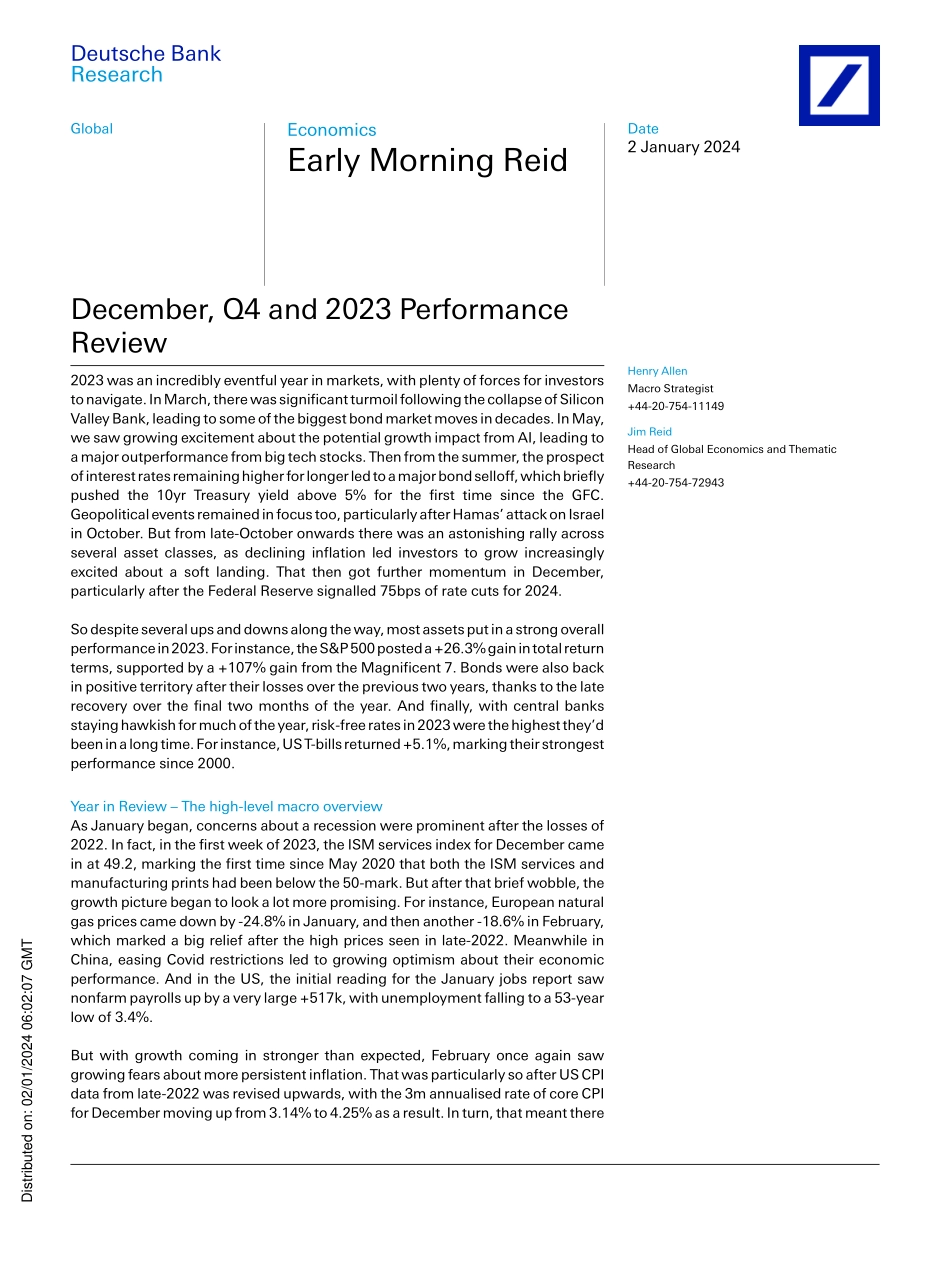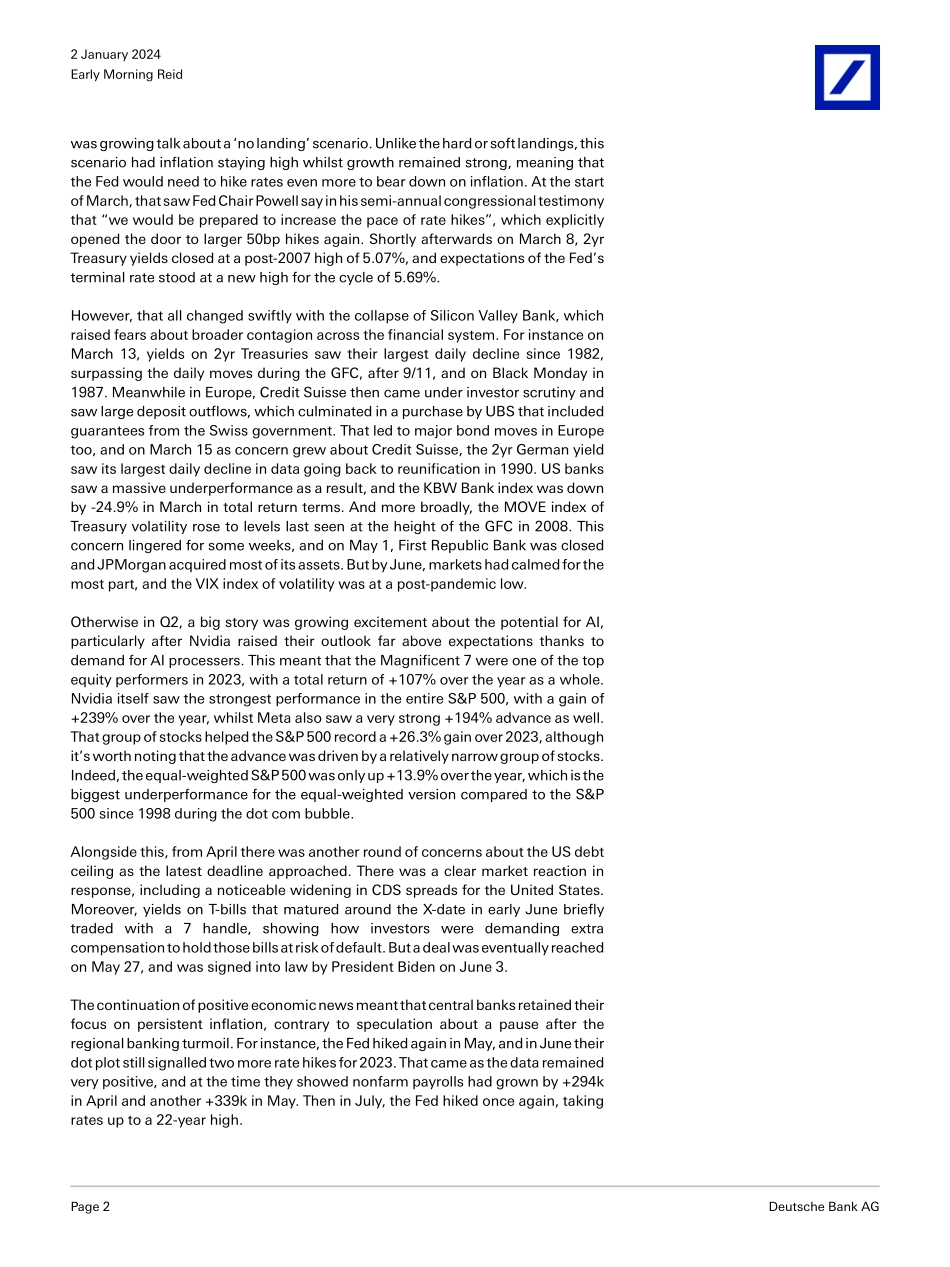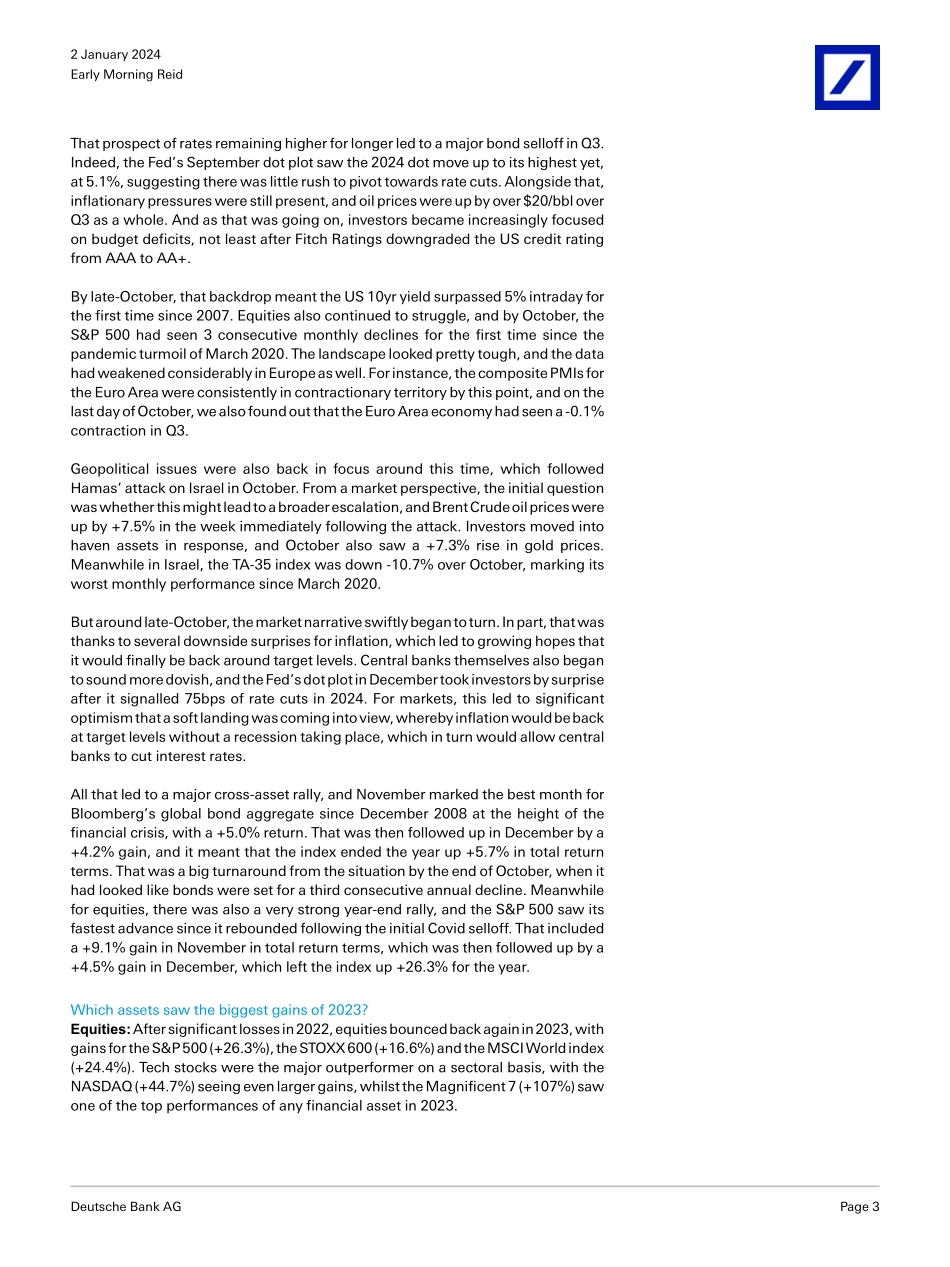2 January 2024Deutsche BankResearch Global Economics Early Morning Reid Date December, Q4 and 2023 Performance Review2023 was an incredibly eventful year in markets, with plenty of forces for investors to navigate. In March, there was significant turmoil following the collapse of Silicon Valley Bank, leading to some of the biggest bond market moves in decades. In May, we saw growing excitement about the potential growth impact from AI, leading to a major outperformance from big tech stocks. Then from the summer, the prospect of interest rates remaining higher for longer led to a major bond selloff, which briefly pushed the 10yr Treasury yield above 5% for the first time since the GFC. Geopolitical events remained in focus too, particularly after Hamas’ attack on Israel in October. But from late-October onwards there was an astonishing rally across several asset classes, as declining inflation led investors to grow increasingly excited about a soft landing. That then got further momentum in December, particularly after the Federal Reserve signalled 75bps of rate cuts for 2024.So despite several ups and downs along the way, most assets put in a strong overall performance in 2023. For instance, the S&P 500 posted a +26.3% gain in total return terms, supported by a +107% gain from the Magnificent 7. Bonds were also back in positive territory after their losses over the previous two years, thanks to the late recovery over the final two months of the year. And finally, with central banks staying hawkish for much of the year, risk-free rates in 2023 were the highest they’d been in a long time. For instance, US T-bills returned +5.1%, marking their strongest performance since 2000.Year in Review – The high-level macro overviewAs January began, concerns about a recession were prominent after the losses of 2022. In fact, in the first week of 2023, the ISM services index for December came in at 49.2, marking the first time since May 2020 that both the ISM services and manufacturing prints had been below the 50-mark. But after that brief wobble, the growth picture began to look a lot more promising. For instance, European natural gas prices came down by -24.8% in January, and then another -18.6% in February, which marked a big relief after the high prices seen in late-2022. Meanwhile in China, easing Covid restrictions led to growing optimism about their economic performance. And in the US, the initial reading for the January jobs report saw nonfarm payrolls up by a very large +517k, with unemployment falling to a 53-year low of 3.4%.But with growth coming in stronger than expected, February once again saw growing fears about more persistent inflation. That was particularly so after US CPI data from late-2022 was revised upwards, with the 3m annualised rate of core CPI for December moving up from 3.14% to 4.25% as a ...


